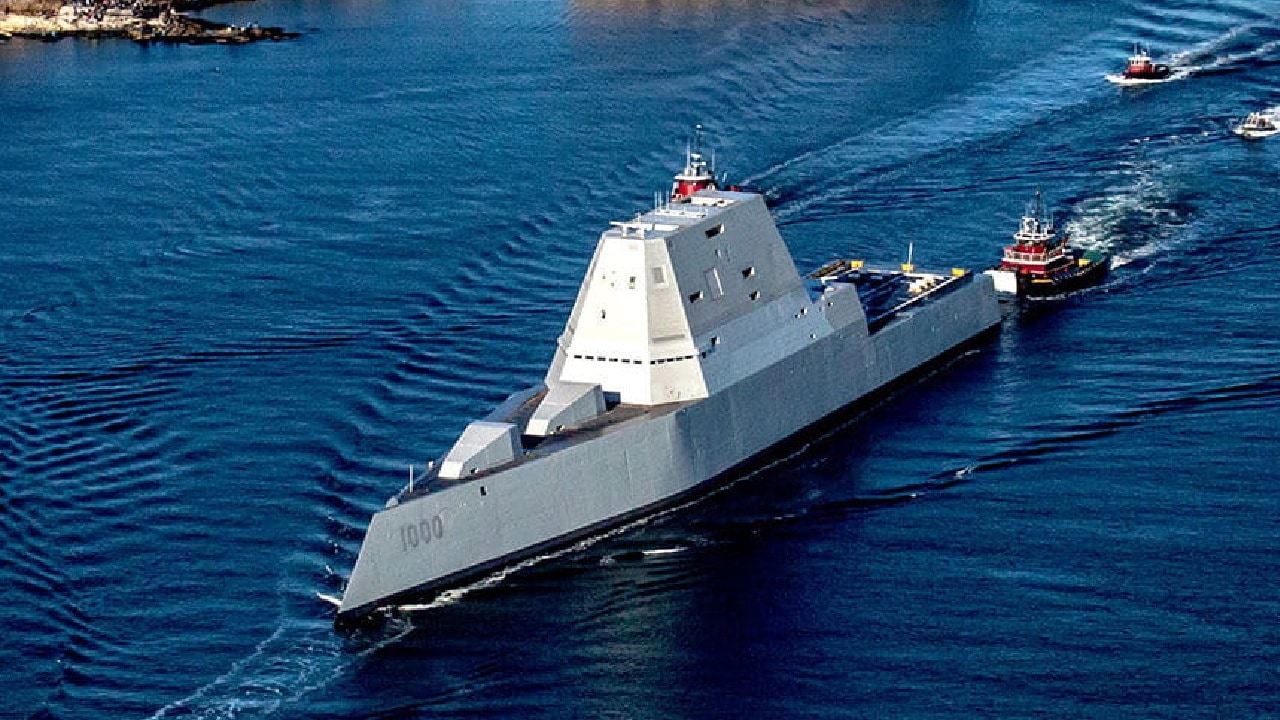As I noted in a previous piece on the stealthy Zumwalt-class guided-missile destroyers (DDGs), the name of Admiral Elmo Russell Zumwalt Jr. is a revered one in the annals of U.S. Navy history, and with darn good reason.
Elmo Zumwalt was the youngest-ever chief of naval operations. Zumwalt was 49 when he was tabbed for the position in July 1970, and he proved himself more than worthy of the job. His laundry list of accomplishments during four years in the office ranged from championing the F-14 Tomcat as the U.S. Navy’s replacement for the F-4 Phantom II; overseeing the creation of the Ohio-class ballistic missile submarines; commissioning the Oliver Hazard Perry-class guided-missile frigates; and introducing the so-called Z-grams, such as Z-66 and Z-116, which were geared toward creating greater opportunities in the Navy for minorities and women, respectively.
Alas, it has been reasonable to wonder whether the warship class named in Zumwalt’s honor is worthy of his legacy — and whether it is worth taxpayer dollars. However, the Zumwalts now have a chance to redeem themselves, thanks to the addition of hypersonic missiles.
Zumwalt-Class Early History and Specifications
Hard to believe as it may seem, these ships were intended to assume the role previously fulfilled by battleships in meeting a Congressional mandate for naval fire support. Appropriately, the first ship of the class is the USS Zumwalt (DDG-1000), which had her keel laid in November 2011, followed by her launch in October 2013, commissioning in October 2016, and official acceptance by the U.S. Navy at her homeport in San Diego, California, in April 2020.
Next came the USS Michael Monsoor (DDG-1001), named after a Navy SEAL who fought and died bravely during the Iraq War and was posthumously awarded the Medal of Honor. This vessel was commissioned in January 2019 and participated in RIMPAC 2022.
Lastly, there is the USS Lyndon B. Johnson (DDG-1002), which launched in December 2018 but still awaits commissioning.
Specifications for the class include a displacement of 15,907 tons, a hull length of 610 feet, a beam width of 80.7 feet, and a draft of 27.6 feet. As a major bonus, the old-school tumblehome hull design results in a stealth ship with radar cross-sections comparable to a fishing boat.
The two Rolls-Royce MT30 Marine Gas Turbine engines power the Zumwalts through the waves at a max speed of 30 knots (35 mph). Crew complement consists of 147 commissioned officers and enlisted sailors, plus 28 in a hypothetical air detachment.
As for the armament, it starts with two 30mm Mk 46 Mod 2 Gun Weapon Systems, AKA the Mk44 Bushmaster II chain gun. From there, these destroyers pack twenty Mk 57 vertical launch system modules. Each module holds four cells, netting a total 80 launch cells.
The modules can hold either the Evolved Sea Sparrow missile, the Tomahawk cruise missile, or the RUM-139 Vertical-Launch Anti-Submarine Rocket.
Worth Their Weight in Gold or Waste of Taxpayer Dollars?
The next system is where the problems start — both technical problems and concerns about wasteful government spending. The BAE-built Advanced Gun System consists of two 155mm guns (6.1 inches), which on paper are a definite increase in power from the 5-inch (127mm) main guns that have been standard armament on Navy destroyers for many years.
In reality, as my colleague Sebastien Roblin put it, “The Zumwalt’s Advanced Gun System didn’t even work that well, with two-thirds the forecast range (around 70 miles). Furthermore, its rocket-boosted LRLAP GPS-guided shells cost $800,000 each—nearly as expensive as more precise, longer-range and harder-hitting cruise missiles.
The Navy finally canceled the insanely expensive munitions, leaving the Zumwalt with two huge guns it can’t fire.”
Ominously for the future of the warship class, only three out of the originally planned 32 ships were built. The rest were canceled.
A Hypersonic Lease on Life
Luckily, hypersonic weapons now give us cause to take a second look at the Zumwalt class. This comes not a moment too soon, given how the Russians and Chinese are running riot with their own hypersonic missiles. As noted by a Lockheed Martin press release quoted by Naval News on Feb. 18:
“The U.S. Navy awarded Lockheed Martin a contract worth more than $2 billion, if all options are exercised, to integrate the Conventional Prompt Strike (CPS) weapon system onto ZUMWALT-class guided missile destroyers. CPS is a hypersonic boost-glide weapon system that enables long range missile flight at speeds greater than Mach 5, with high survivability against enemy defenses…The combination of the CPS capability, and the stealth and mobility of the ZUMWALT-class destroyer, will provide the nation’s first sea-based hypersonic strike capability.”
The article concludes by reporting that the Navy plans to perform a hypersonic missile test shot off the USS Zumwalt in December 2025.
MORE: B-21 Raider: China Should Fear America’s New Stealth Bomber
MORE: H-20: China Is Building a New Stealth Bomber
MORE: Is Russia’s Su-57 Felon Stealth Fighter a Total Bust?
Time will tell whether the test will help assure the survival of the Zumwalt class, or hasten the ships’ demise.
Christian D. Orr is a former Air Force Security Forces officer, Federal law enforcement officer, and private military contractor (with assignments worked in Iraq, the United Arab Emirates, Kosovo, Japan, Germany, and the Pentagon). Chris holds a B.A. in International Relations from the University of Southern California (USC) and an M.A. in Intelligence Studies (concentration in Terrorism Studies) from American Military University (AMU). He has also been published in The Daily Torch and The Journal of Intelligence and Cyber Security. Last but not least, he is a Companion of the Order of the Naval Order of the United States (NOUS). In his spare time, he enjoys shooting, dining out, cigars, Irish and British pubs, travel, USC Trojans college football, and Washington DC professional sports.

